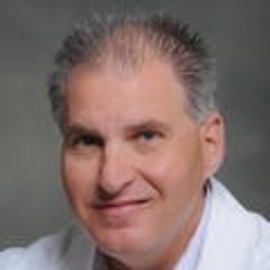The Series Podcast Objectives are:
-
Understand how the medical affairs strategic planning process can drive decision making throughout the year
-
Gain insight into the value medical affairs bring across an organization when an effective, collaborative, aligned medical strategy plan is developed
-
Obtain a working knowledge of how cross-functional teams within medical affairs can reference strategic plans to inform decision making and assess impact of efforts

MODERATOR: Monica DeAbadal, MD, MBA/HSA

SPEAKER: Pete Piliero, MD

SPEAKER: Eileen K Sawyer PhD

SPEAKER: Len Valentino, MD

SPEAKER: Anna Walz
Following is an automated transcription provided by otter.ai. Please excuse inaccuracies.
Monica de Abadal
Welcome to the medical first professional societies medical strategy and launch excellence focus area working groups for episode podcast serious Medical Affairs plans from strategic planning to measuring impact. The views expressed in this recording are those of the individuals and do not necessarily reflect the opinions of MAPS or the companies with which they are affiliated. This presentation is for informational purposes only, and is not intended as legal or regulatory advice. This podcast focuses on the measurement of success of Medical Affairs strategic plan, I am Monica de Abadal. Currently I serve as the VP medical excellence at Ipsen. In addition, I co lead the MAP Medical Strategy and Launch Excellence Focus Area Working Group and have served as part of the MAPS media committee. This series podcast objectives are understand how the Medical Affairs strategic planning process and draft decision making throughout the year gain insight into the value Medical Affairs bring across an organization when an effective collaborative online medical strategy plan is developed. Our panelists for the podcast are Peter Piliero, MD. He serves as VP and head medical efforts America’s GSK consumer healthcare, Eileen Sawyer PhD, she is vice president global Medical Affairs at Uniqure, Anna Walz CEO of MedEvoke, Len Valentino president and CEO National Hemophilia Foundation. As we all know, understanding of the disease and the treatment landscape is the basis of a strategic planning. In the previous episodes of the series, we began our discussion about the importance of the strategic components and cross functional work, have a medical strategic plan, when to start planning on which kind of activities or tactics should we plan in order to achieve our scientific imperatives. So more traditional on other more innovative social media listening, the panel will now explain how, when, and why it is so important to measure the success of the medical strategic plans.
Len Valentino
So you know, we’re talking about how we make an impact. And I think, you know, we have to be able to measure the impact and importantly, the uptake of what we’re doing. So our strategies, and then our tactics. So it’s, you know, the old saying is, if you can’t measure it, it’s not done. So we have to be able to measure this. So we’ve got, you know, a lot of the internal efforts that we talked about. And those are the straightforward things that, you know, we’ve been doing for a long time, it’s educational conferences and symposia and publications, and all that knows, you can count, but I like to say, Don’t confuse activity with accomplishment. So just because you have five publications, it doesn’t mean that they’re necessarily impactful. So it’s really looking at the impact of your publications, or whatever activities, you’re doing. The conferences, and congresses, again, you know, you’re looking at where they’re held, what your audience is, we had an interesting example where we noticed that a having a large symposium in a hematology conference, we had 500 attendees, 50% of them were industry. So that was who we wanted, they weren’t the people that, you know, we don’t need to educate our peers, we were trying to educate the physicians. So we changed our tactic for the next one and did it a little differently. So we get an invitation only program. And I think that targets the audience that group will do for so you can change the types of things you’re doing. And then I think the last thing, what we’ve been talking a lot about is the digital, I think we probably have covered that at this point, but start to pay attention to it. I think, if you don’t have the internal capabilities, which I would guess nobody in here has internal capabilities to be able to do this. It’s finding a partner that you can work with, that has these capabilities and can bring this technology to you.
Anna Walz
And you know, this is, as you’re kind of walking through the conference, look at some of that solution providers out there. And I can’t think of each and I have met so many interesting platforms that can aggregate your data within your company. So whatever you’re collecting from that info, whenever you’re collecting some fields, medical insights, imagine if you’re able to pull that all together and start to look for patterns right? And you’re starting to see what is actually happening because if things are living inside. So insights are different from your pups that are different on your advisory board. And then it has a lot of information. But when you bring them together and you start teaching tools that can help you, then you can start asking questions of the data and determining, which is something that we should do.
Pete Piliero
So, again, Len started there, bring this topic up about measuring impact. At the end of the day, your strategy is not going to be very valuable if you haven’t achieved what you set out to do and have impact. So I think you shouldn’t wait also till the end of the year to make this assessment. So these are just some questions that you can ask along the way to see if you need to course correct or not. So what has been the impact or efforts thus far? Whatever competitors done? Since we did we put together our plan? How is the market evolved? And therefore what are we can potentially do differently than we set out to do at the beginning of the year? Does our proposed strategy resonate outside our organization? So this is a real opportunity, I think we probably haven’t taken great advantage of but once you have your medical strategy, right before you finalize it, if you already have a team out there engaging with KOLs, go out and test the waters and say, you know, do you think this is a bonafide value to say, for example, educate on X, Y, or Z, and get feedback from the KOLs to validate, if you will, your strategy. Now, you could do that in that board as well. But of course, you know, 10, or 12, maybe 15, depending on your compliance framework. But you can be out there talking to 50 KOLs in a week, it’s time to pay the team size, and bring that information back to validate before you finalize, which goes along with the next book, which topics resonate with the external stakeholders, they’re going to usually go hand in hand, what do they want to hear about? What’s of interest to them in this area that you’re pursuing? And so with that information, you could say, should we stay the course? Or should we shift gears? Do I have the right resources, resources could be people, maybe you need a bigger field team, or budget, you need more money for is or you need to put some more efforts towards medical education grant. So you can you can do that? Do I have the right KOLs DLL, hopefully, many of you are using some of the newer platforms available for KOLs identification and kll profiling. And it’s really come a long way. I think the way we identify KOLs now is way better than the older days of just kind of asking around or doing a little bit of Google searching. There’s so much more out there that one can do. And do my strategic imperatives match up with my proposed plan? Again, you start with this strategy, you develop a tactical plan, they should ultimately match so that the end of the day you say, of my five strategic imperatives, I have more than that. Did I achieve the imperative at the end of the year through the tactical plan that was developed? And this is just a very simple slide, which goes along with constantly assessing your plan, which is if you look at it on a regular basis, you can say, Are there things here that I could stop, we’ve achieved this imperative already, for this area is no longer important. Let’s stop. Are there new things you need to do based on how the market is evolving? And the last part is, what do you continue? Because you haven’t yet gotten to the point of what you were trying to do with your strategy.
Anna Walz
And which one do you think is the hardest? Stop? Right? Sometimes you just don’t want to stop, it feels good to keep going. So maybe you don’t need to.
Len Valentino
Yeah, that’s so important to make that determination. And we talked a lot about stopping a development program at the right time. So you’re not investing a lot of resources. But on Medical Affairs, again, our tactics can cost a fair amount of money as well. So if you see a message, or an educational topic not getting traction, you may again need to course correct and put some money towards a different way of doing that. Or if you feel like you’ve now determined that you’ve achieved the educational disease awareness that you were trying to do, you may be able to pull back a little bit on your resources.
Anna Walz
So quick question for you guys. And actually, I would like our panel to answer it and pieces to the microphone first. How frequently Are you referring back to your plan?
Pete Piliero
So I’d say this is the one of the areas that I’ve seen change a lot over the last few years in particular. We used to do the plan, and maybe look at it one more time if we’re lucky and then redo it the next year. As we’ve tried to do a better job at communicating the value of Medical and develop the right KPIs. And sometimes having a dashboard associated with that, it really behooves you to look at it on a regular basis. So we’re trying to do now is at least quarterly at our medical sub teams having a relook. And reassessing and doing a stop start continue type of approach there.
Len Valentino
So in a previous organization, again, with a portfolio approach, we would actually do this on a monthly basis, we would look at what we were doing compared to the plan, where the deviations were. And then being able to assess was this resonating? Was it not resonating with it? Were we getting the desired outcome? I think probably quarterly is about right, especially if you’re in a smaller organization. But I think if you have multiple products, all in different phases of development, especially if some are commercialized, you may need to do it more frequently.
Eileen Sawyer
I would say, quarterly is probably about right for sort of a bit of a check in for, you know, how are we doing? Are these tactics still making sense? And, you know, do we need to react to anything? Is there anything emerging? Because as I said earlier, this really is a living document. And so it might end up being around sort of at least quarterly. Sometimes it’s more frequently than that, depending on how quickly things are evolving. And then, once a year really doing a deep dive overhaul to say, Okay, this is as far as we made it this year, we the things we achieve, we didn’t What are we going to focus on next year.
Monica de Abadal
Thank you to our panelists for engaging in this important conversation and providing their perspectives on the importance of measuring the progress of medical strategic plans. I hope you all walk away with valuable guidance to help with your strategic planning. This has been the fourth podcast in a series of Medical Affairs plans from strategic planning to measuring impact. If you’re not yet a MAPS member, and would like access to additional resources in this area. Please visit the MAPS website to start joining today at Medical Affairs.org backslash membership



